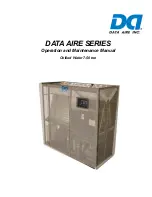
20
Working depth indicator
TIGER seedbed cultivators are equipped with a working depth indicator which
indicates the depth in centimetres. Adjust the indicator as described below.
The indicator is set to 0 at the factory, indicating the position in which the tines
and wheels are at the same level.
When beginning harrowing, check the setting as follows:
•
Measure the working depth behind the cultivator.
•
Loosen the screws indicated with “
a
” in the figure.
•
Turn the assembly until the indicator shows the measured value.
•
Tighten the screws.
•
Check the movement of the bar.
Use of the frontboard
The frontboard control only functions when the cultivator is in the working position,
i.e. the tines are in the ground.
The frontboard must be adjusted so that it levels the ploughed soil and transfers a
row of soil equal to the height of the points in front of it. The position of the frontboard
can be controlled hydraulically while underway according to the soil type and need
for levelling.
a
Summary of Contents for TIGER 500
Page 3: ...3 1 INTRODUCTION Intended use Technical specifications Type plate ...
Page 7: ...7 2 SAFETY GUIDELINES Warnings Transport on roads ...
Page 23: ...23 4 HARROWING a General b Driving lines ...
Page 28: ...28 Lubrication points One time in a season Every week Two times in a week ...
Page 35: ...35 6 WARRANTY ...
















































